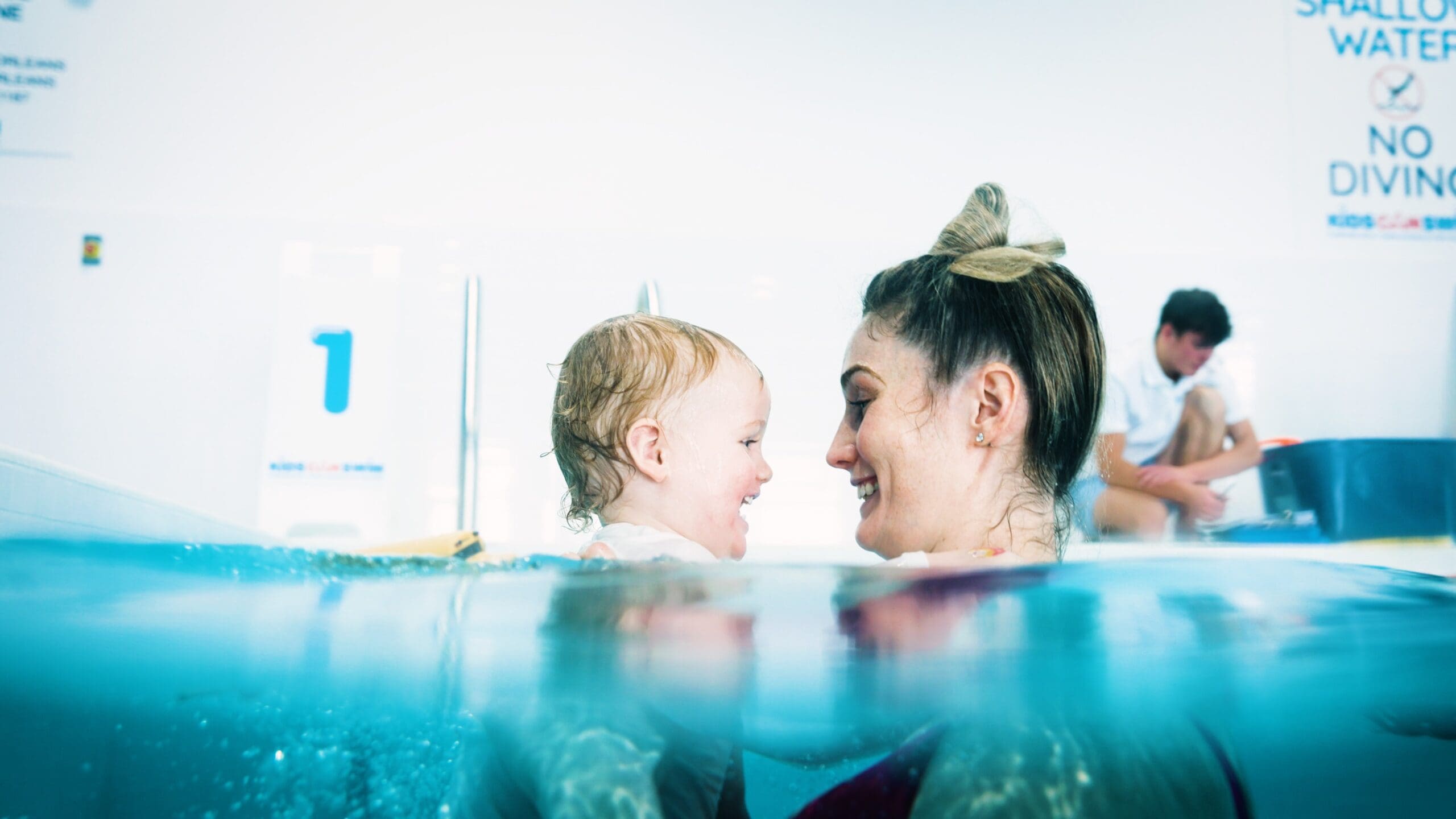
Curious about infant swim lessons? Learn when to start, what to expect, and how KidsCanSwim Canada creates a safe, warm, and nurturing environment for your baby’s first splash.
Swimming Starts Sooner Than You Think
Many parents wonder, “Is my baby too young for swim lessons?”
The truth is, early exposure to water can have lifelong benefits—not just for physical development, but also for safety, bonding, and emotional regulation.
At KidsCanSwim Canada (KCS), we offer specialized parent-and-baby programs designed to introduce infants to water gently and safely, laying the foundation for confident, capable swimmers down the road.
Here’s what you need to know.
1. What’s the Right Age to Start Baby Swim Lessons?
Most pediatric and swim education organizations—including the Canadian Pediatric Society and Lifesaving Society—recommend starting formal water orientation between 3 to 6 months of age, once babies have:
- Good head and neck control
- Settled feeding and sleeping rhythms
- Up-to-date vaccinations (as per pediatrician guidance)
KCS accepts infants from as early as 3 months in our infant swim program, with lessons tailored to both their development and comfort.
2. Are Infant Swim Lessons Safe?
Yes—when done properly.
At KCS, our pools and curriculum are specifically designed for infant safety:
- Warm-water pools (~32°C) to prevent chill
- Small group sizes for focused attention
- Certified aquatic educators trained in infant safety and CPR
- Hands-on parental involvement in every lesson
Lessons never include forced submersion or high-risk activities. Instead, they emphasize gentle water familiarity and sensory exploration.
3. Why Start So Early? The Benefits of Baby Swim Lessons
Early exposure to swimming offers multiple developmental benefits:
- Water comfort and confidence from an early age
- Bonding time between parent and child
- Stimulation of motor skills like kicking, reaching, and balance
- Development of breath control and body awareness
- Introduction to routine and group learning environments
There’s also a growing body of research suggesting that babies who swim regularly may show advanced cognitive and language development due to the multisensory stimulation and movement patterns involved.
4. What Happens in a Typical KCS BabyCanSwim Class?
A parent-and-baby swim class at KCS might include:
- Singing songs and playing games to introduce rhythm and movement
- Floating with support to build balance and trust
- Gentle cueing exercises to support eventual submersion readiness
- Holding and movement techniques for caregivers
- Safety skills like back floats and rollovers (as development allows)
The focus is not on just “teaching babies to swim” but on positive water experiences, safe handling, and strengthening the parent-child connection.
7. What’s the Long-Term Value of Starting Early?
Children who begin swim lessons in infancy often:
- Move more quickly through later levels
- Show fewer fears of water
- Have more developed body awareness
- Learn swim safety cues earlier
- Treat swimming as normal, not novel
More importantly, they enjoy water as a part of life—whether at the cottage, on vacation, or in the bath.
At KidsCanSwim Canada, we believe that swim lessons aren’t just about skills—they’re about building a positive lifelong relationship with water in a safe, warm, expertly guided environment.
